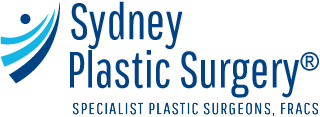Rhinoplasty
Rhinoplasty is a delicate procedure that requires both technical precision and artistic expertise. It can alter the appearance of your nose, enhance facial harmony, and alleviate breathing difficulties. At Sydney Plastic Surgery, Dr Barnouti, MBBS, FRACS (Plas), provides customised rhinoplasty solutions based on each patient’s anatomy, goals, and functional needs.
Why Consider Rhinoplasty?
People choose rhinoplasty for many reasons, including:
- Reshaping the nasal tip, bridge, or nostrils
- Reducing or increasing overall nose size
- Correcting a hump, droop, or deviation
- Improving nasal breathing caused by a deviated septum or enlarged turbinates
Rhinoplasty can be performed using two main techniques:
Closed Rhinoplasty – Incisions are made inside the nostrils, leaving no visible scars.
Open Rhinoplasty – This procedure involves a small incision at the base of the columella (the tissue between the nostrils), allowing for improved visibility and access during surgery.
In some cases, additional procedures such as septoplasty or turbinate reduction are performed to improve airflow and correct functional issues.
Structural and Functional Corrections
Septoplasty
A deviated septum is a common issue that can obstruct nasal airflow. Septoplasty straightens or removes the displaced septal cartilage to restore breathing through both nostrils. This condition may be present from birth or caused by injury.
Turbinectomy
Turbinates help filter and humidify air, but when they become enlarged due to allergies or inflammation, they can block airflow. Turbinate reduction decreases their size to relieve nasal congestion and improve breathing. This is often done alongside rhinoplasty.
Types of Rhinoplasty
Reduction Rhinoplasty
Removes excess cartilage or bone to create a smaller, natural-looking nose while preserving functional breathing.
Augmentation Rhinoplasty
Used to enlarge the nose using implants or cartilage grafts from your own body. Often requested by patients of Asian background seeking improved nasal height or definition.
Reshaping Rhinoplasty
Focuses on refining specific elements of the nose, such as the tip, dorsum, or nostrils. Minor changes may be possible with non-surgical options, such as dermal fillers, while more significant reshaping typically requires surgery.
Combined Septorhinoplasty with Turbinectomy
Addresses both aesthetic and breathing concerns in a single surgery. This procedure ensures a well-balanced nose shape from both the front and side while improving airflow and internal nasal function.
Your Initial Consultation
You’ll meet with Dr Barnouti to:
- Discuss your goals and expectations
- Review your full medical history
- Undergo a detailed nasal examination
- Assess your facial proportions and nasal structure
Computer imaging will be used to explore potential results, helping you visualise changes to the tip, dorsum, nostril width, bridge, and nasal base.
If appropriate, non-surgical options (such as fillers) may be offered during the same appointment.
What Happens During Surgery?
- Procedure length: 1.5 to 3 hours, depending on complexity
- Performed under general anaesthesia or local anaesthesia with sedation
- Incisions are placed inside the nose (closed) or across the columella (open)
- Internal cartilage and bone are reshaped to create the desired outcome
If needed, septoplasty and/or turbinectomy are performed during the same procedure.


